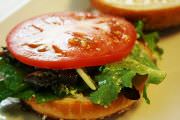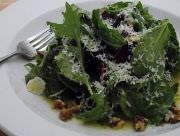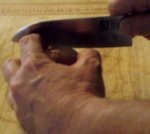Yankee Pot Roast
Well, you gotta use that beef stock for something. Pot roast is one of my all time favorite comfort food dishes which is ironic because my mom made the world's worst pot roast. That thing was so dry and desiccated it was like eating that really hard dry jerky. Sorry mom, but the truth was going to come out one day. When I was a kid I dreaded pot roast day. The dogs loved it, however, because I would sneak as much as I could get away with under the table. Thank god for Duke.
I, on the other hand, make perfect pot roast. My first chef taught me how to make pot roast. I remember the day as if it were yesterday. Chef showed up with an enormous amount of chuck and I asked, "What's that for?" He said, "It's for my pot roast recipe." I said, "Oh dear god." He just looked at me for a bit and then said, "Obviously, you've never had my Yankee pot roast." We went to work on it and when it came out of the oven I tasted it. Man oh man, I actually cried a little, it was so effing good. Like nothing I had ever put in my mouth before. Not joking, I still tear up a little just thinking about it. It is that good. This is why I love comfort food so much.
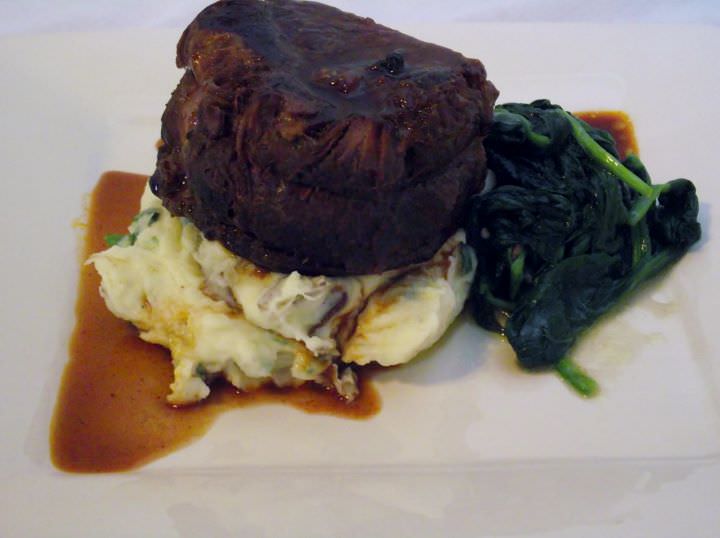 Yankee Pot Roast, Parsley Mashed Potatoes, and Sauteed Spinach
Yankee Pot Roast, Parsley Mashed Potatoes, and Sauteed Spinach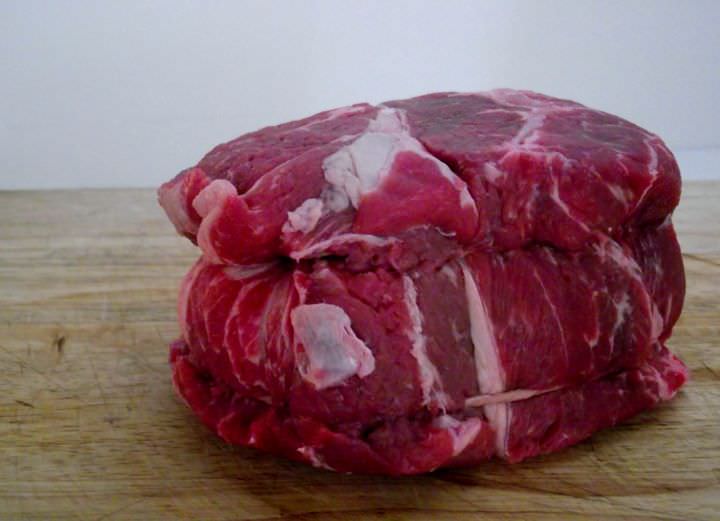
Tie the roast with butcher's twine. This helps keep it together during braising.
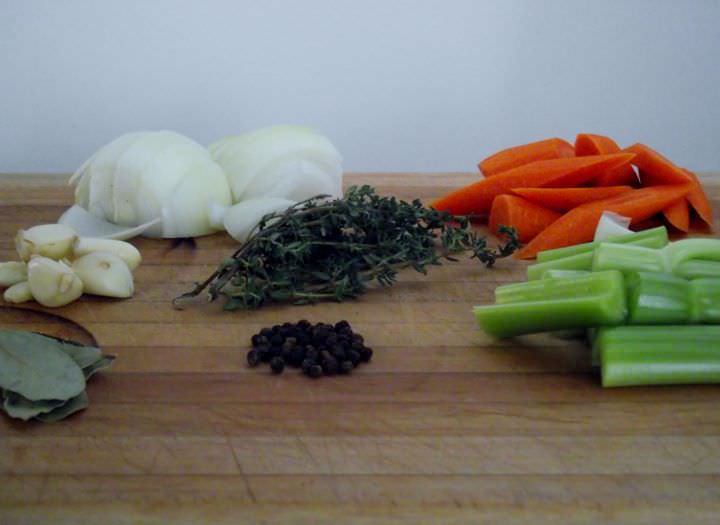 Garlic, Onion, Celery, Shallot, Carrots, Bay Leaf, Peppercorn, and Thyme
Garlic, Onion, Celery, Shallot, Carrots, Bay Leaf, Peppercorn, and ThymeGather your mise en place, or ingredients.
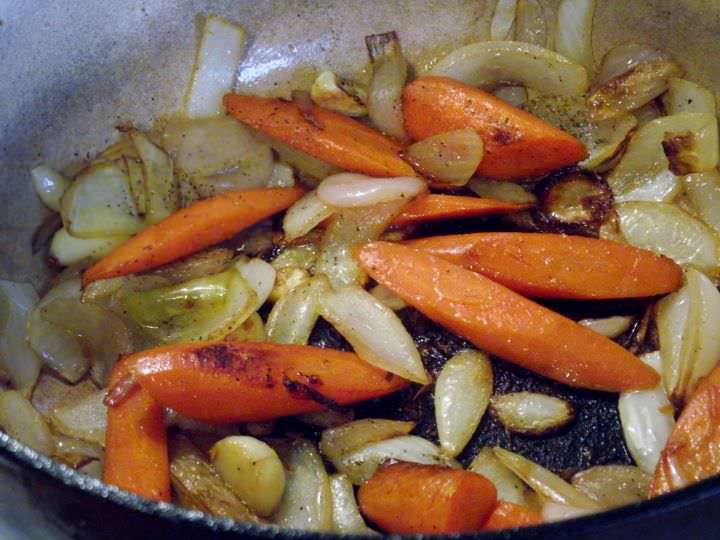
Add the onion, shallot, and carrot and cook over medium until they are beginning to caramelize. Add the garlic cloves and continue cooking, stirring occasionally, until the garlic has browned.
The Dutch oven is going to develop a fond (see notes) on the bottom of the pot. That is a good thing, it provides a lot of flavor.
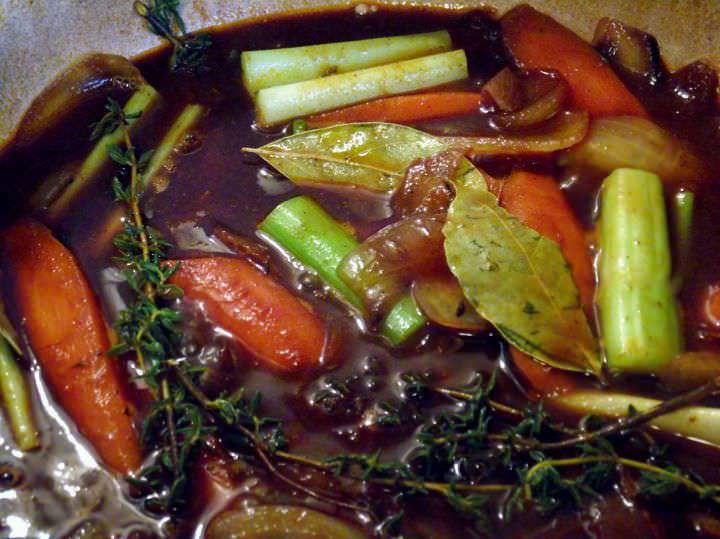
Add the tomato paste and stir to coat everything. Cook 1 to 2 minutes to allow the tomato paste to caramelize. Add the red wine and stir. Allow to come to a low boil and cook 3 to 5 minutes. Add the thyme, bay leaves, peppercorns, and beef stock.
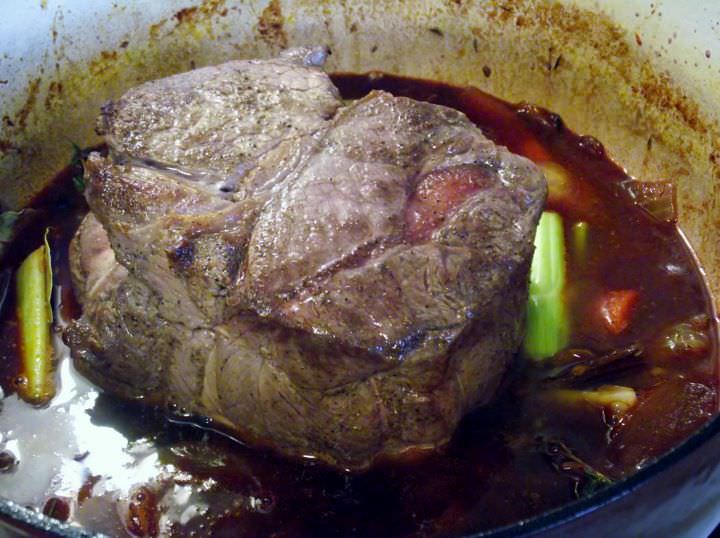
Add the chuck roast back in, on top of everything else. Dump any juice that colleted from the roast, into the pot.
Making A Perfect Pot Roast
There is no single correct recipe for pot Roast. Common to all of them is the braising, or slow cooking, at moderate-low heat which slowly breaks down and tenderizes tough cuts of meat. During braising the connective tissue breaks down leaving moist and tender pieces of meat which are full of flavor.
Vegetables in the recipe depend upon what is available and economical, most often onions, potatoes, carrots, and celery, but turnips and parsnips are fairly common.
Stews and braises usually contain some ingredient that provides acidity, in this recipe, the tomato paste and red wine provide acidity to heighten flavors.
Yankee Pot Roast
- Yield: Varied
- Prep Time: 30 minutes
- Cook Time: Varied
Equipment
- Dutch Oven
Ingredients
- Peanut oil, for searing, sauteing
- 1 two pound chuck roast, tied
- Kosher salt
- Black pepper
- 1 onion, sliced
- 2 carrots, peeled and cut on a bias
- 2 shallots, sliced
- 5 cloves garlic, peeled
- 2 stalks celery, cut into 1 inch lengths
- 1/4 cup tomato paste
- 2-1/2 cups red wine, divided
- 8 to 10 sprigs thyme
- 2 bay leaves
- 1 teaspoon peppercorns
- 3 cups beef stock, divided
- 10 to 12 parsley sprigs
Method
- Preheat oven to 450° F / 230° C.
- Tie the roast with butcher's twine. This helps keep it together during braising.
- Place the Dutch oven over a burner set to medium. Season the chuck roast, liberally, with salt and pepper. When the pot is hot add enough peanut oil to just coat the bottom of the pan. Sear the roast on all side until it is nicely caramelized. Remove and set aside.
- Toss out the oil in the pan and add fresh oil. Then add the onion, shallot, and carrot and cook over medium until they are beginning to caramelize. Add the garlic cloves and continue cooking, stirring occasionally, until the garlic has browned. Toss in the celery.
- Add the tomato paste and stir to coat everything. Cook 1 to 2 minutes to allow the tomato paste to caramelize.
- Add the red wine and stir. Allow to come to a low boil and cook 3 to 5 minutes.
- Add the thyme, bay leaves, peppercorns, and beef stock. Give it a stir and return to a simmer. Cook another 2 to 3 minutes.
- Add the chuck roast back in, on top of everything else. Dump any juice that colleted from the roast into the pot. bring to a full boil over medium high heat.
- Toss in the parsley sprigs, cover with a tight fitting lid, and place on the middle rack of the oven. Immediately reduce the heat to 325° F / 160° C.
- Braise until the meat is tender and has no resistance when you pull a small piece off.
Notes
- Fond is French for bottom. It means the concentrated juices and bits of food stuck to the bottom of the pan after sauteing.
- Yankee pot roast is simply the New England name for pot roast.
